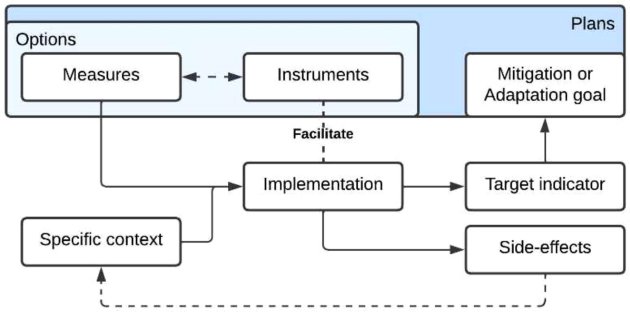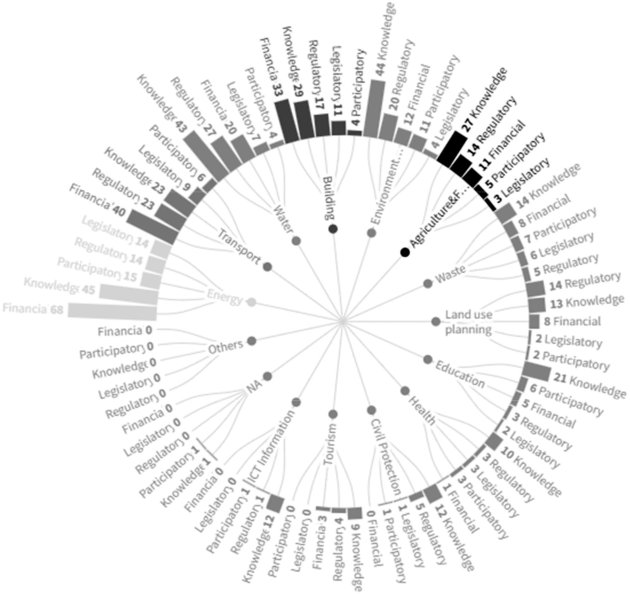Climate Change
How urban green can keep tropical cities cool
6 min
Mitigating emissions and adapting to climate change is challenging. There's often a gap between what science recommends and what gets implemented in our regions and cities.
Our new Integrated database on adaptation and mitigation measures in Europe aims to help close this gap. It provides a collection of practical measures and tools to help make climate plans easier to implement.
Despite increased planning efforts following the 2015 Paris Agreement, the implementation of climate actions remains significantly behind schedule.
Many countries and municipalities struggle to translate their climate goals into tangible actions. Factors like long-term planning and implementation timelines, underestimation of costs, and insufficient consideration of justice and equity issues contribute to this gap.
Knowing such aspects will help policy-makers and stakeholders smooth the implementation of climate action.
Our new database compiles data to fill this gap.
We reviewed nine climate adaptation and five mitigation databases, examining 7,130 adaptation actions and 11,409 mitigation actions.
We found that many of these databases don't align well with current climate planning practices. They use different ways to name and categorise actions while showing different abstraction levels, making it hard to share knowledge and best practices. Our database aims to fix this by offering a more unified and coherent approach.

Figure 1 The role of the different climate action types in the planning and implementation process. Source: Martínez Görbig et al., 2024.
To address these issues, we used two complementary approaches to build the database:
Firstly, we compiled all climate actions at the same abstraction level according to their role in the implementation process. For example, we included specific and quantifiable climate actions—named measures—such as "Building dikes" or "Installing Photovoltaics panels," while we discarded broader actions such as "Coastal defences" or "Transitioning to renewable energy sources"—known as options—due to their uncertainty in meaning and lack of data transferability.
We also linked to the measures the specific actions without a direct impact on the environment but with a facilitator role in their implementation—instruments—such as "Offering subsidies for the installation of solar panels."
Secondly, to categorise and characterise all those actions, we took the framework of the Sustainable and Energy Climate Action Plans by the Covenant of Mayors [link?], one of the most significant climate planning initiatives. This approach ensures that the database is comprehensive, practical, and directly applicable to current climate planning needs.
We documented all actions and compiled them into a step-by-step method that allowed us to easily differentiate between the different types of climate actions identified in the study.
Firstly, we designed a five-step decision tree with binary questions to classify the measures. Then, we used a semi-automatic keyword-matching method. Both methods were co-developed and checked by five different expert institutions.
The new database offers several key features that set it apart from existing resources.
Ultimately, we classified and related 191 adaptation measures, 188 mitigation measures, 97 combined measures, and 609 associated instruments.
We identified potential synergies and trade-offs between different measure characteristics, offering a holistic view of climate actions. We also included 93 indicators relevant to the Sustainable Development Goals (SDGs) for monitoring outcomes, ensuring that the measures align with broader sustainability objectives.
Moreover, we designed an interactive display sheet on which users can navigate through the repository based on their preferences and display their preferred measures and instruments.

Figure 2 Number of instruments typically used in each sector. Source: Martínez Görbig et al., 2024.
The integrated database is poised to impact climate action planning and implementation in Europe significantly.
Providing a unified and coherent framework addresses the systematic challenges identified in the review, such as the misalignment and inconsistencies in current databases.
The database enables better knowledge transfer and the sharing of best practices, which is crucial for scaling up climate actions.
Furthermore, by improving the quality of climate plans and facilitating their implementation, this database can help ensure that climate actions are more effective and equitable. Consequently, it represents a critical step forward in meeting the ambitious adaptation and mitigation goals of the international community.
This is a teaser of a published journal article. Click here to read the full article, "Fitting consistent knowledge into the planning process: An integrated database on adaptation and mitigation measures in Europe".